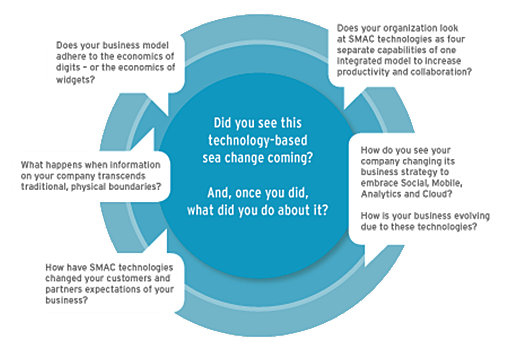Look around and consider the technologies we rely on today: social platforms, smartphones and tablets, analytics and cloud computing. It's hardly news that the impact of these advancements has forever altered the way we live - and not just on a personal level. They've infiltrated the workplace too, creating an unprecedented and, in some cases, caustic reaction for many proven business models.
To remain relevant, companies need to digitize and virtualize the way they work, updating key processes - as well as the organizational and financial models that support them - to keep up with today's information-based markets.
|
In all industries across the business landscape, the SMAC Stack is eroding the century-old blueprint of value chains and spawning new, highly distributed, virtualized business models. The power of this technology platform is in treating it as a stack, for its components have a multiplying effect when they work in combination.
|
 |
Whether you're a general manager, head of information technology, or leading your organization's strategy, a decade from now you'll be asked the same key questions.
|
 |
The use of social, mobile, analytics and cloud technologies is already enabling forward-thinking organizations to work in more connected, collaborative and real-time ways. While each of these forces in isolation is transformative in nature, when combined the impact is profound and offers enterprises the opportunity to shift from old-world industrial models to new friction-free digital ways of working.
But before you can get there, you need to determine which foundational technologies and partner ecosystems to engage and where leveraging SMAC technologies will initially pay off.
While it helps to scale up IT enablement in no time for expanding new or existing business it also mitigates business risk of failure in an uncharted territory or for a new business / product line
|
|
|